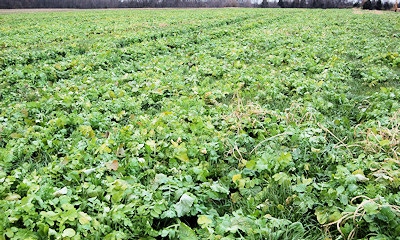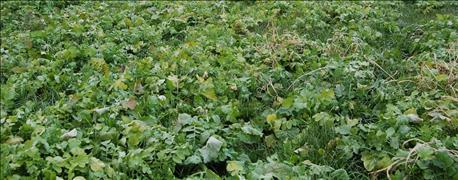March 25, 2016

Most farmers are aware of the benefits of cover crops on soil health. Unfortunately, farmers who plant cover crops for the first time are often unsure of where to begin. Jason Carlile, owner of Carlile Ag Service, Otterbein, is all too familiar with this scenario.
“When I tell guys that I sell cover crops, they want to know how it could fit into their operation,” said Carlile. “They want something that will improve their soil and won’t be overly management intensive.”
Carlile said the majority of the questions are related to management. Seeding and termination are the two most important factors.
Related: What can producers expect from forage cover crops?

COVER CROP START: Seeding and termination are key questions most farmers ask about with cover crops.
“With seeding you have a lot of options,” said Carlile. “I usually ask what equipment the farmer already has.
Seed to soil contact is crucial for a good stand. To get the best stand, Carlile says to use a drill or planter. Aerial seeding is easier, but more costly if you get a poorer stand. Another option is having your local co-op blend the seed with fall fertilizer, broadcast onto the field and then incorporate seed with a vertical tillage implement.
“The earlier you can get seed out there, the better,” said Carlile. “Seed immediately after harvest to maximize growing degree day units that the cover crop receives. You could also plant your earlier corn and soybean hybrids where you plan to cover crop.”
Cover cropping can seem a little daunting because of all the different species and blends. Carlile has a few recommendations for guys just getting started.

STILL ACTIVE: Jason Carlile dug a pit to check root growth on cover crops he had out over winter. In late February actively growing roots were found more than four feet underground.
“For guys that are just starting out, I would suggest an aerial seeding of oats and radish into standing corn,” Carlile said. “There will be lots of fall growth and then both species will winterkill. That means management will be the same come springtime.�”
Another easier cover crop program that Carlile suggests for beginners is planting cereal rye after corn. There won’t be excessive fall growth, but roots penetrate the subsoil through the fall and winter. In the spring it will break dormancy and grow rapidly. After termination, residues break down quickly.
Termination of the cover crop in the spring is another management factor to consider.
“Winterkilled species are obviously the easiest to terminate,” said Carlile. “For other species, like cereal rye, proper scouting and having a plan ahead of time is crucial.”
Related: Four considerations to get started cover cropping
It’s important to keep in mind that prior to any herbicide application, the cover crop needs to be actively growing for an effective burndown.
If you aren’t planting species that will winterkill, Carlile suggests attending a local SWCD or NRCS meeting to get a better idea of how other farmers terminate cover crops in the spring.
“It’s really important to be flexible with termination and have patience with spring weather,” said Carlile. “Find someone with experience who can help you.”
- Sigman is a recent Purdue University graduate and agronomist in northwest Indiana. She is an employee of Carlile Ag Service.
You May Also Like




